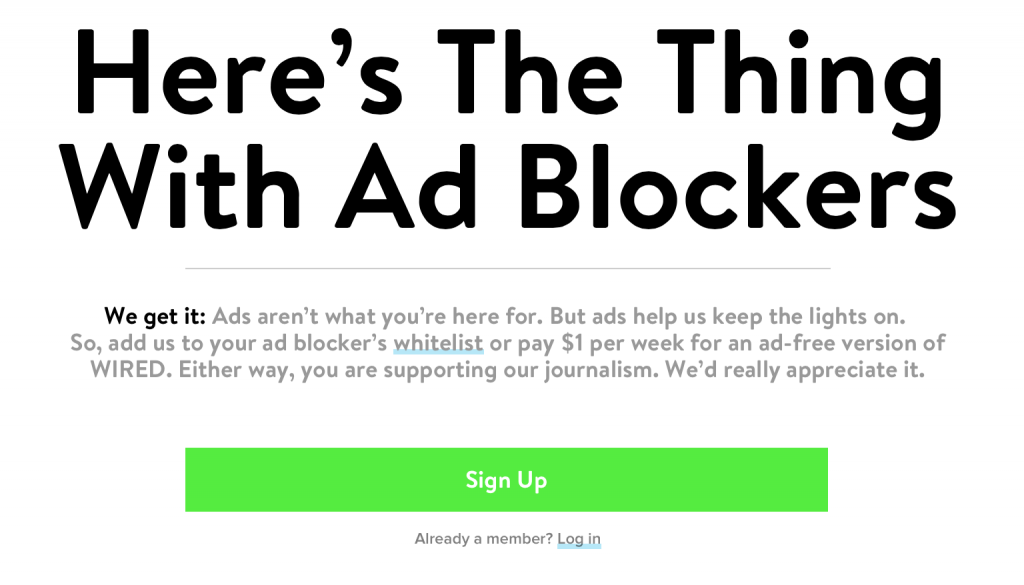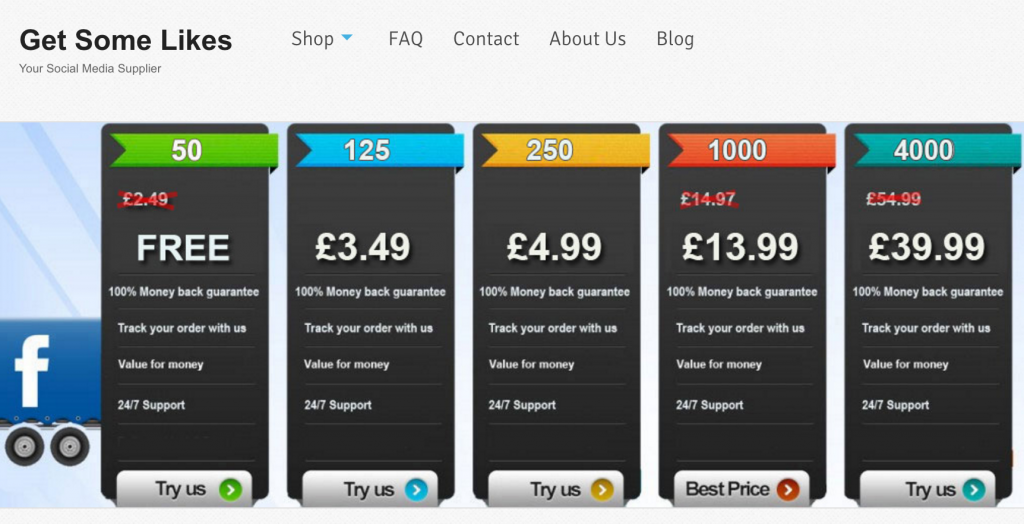
If you use an adblocker, you are probably familiar with messages of the kind shown above, asking you to either disable your adblocker, or to consider supporting the host website via a donation or subscription. This is the battle du jour in the ongoing adblocking arms race — and it’s one we explore in our new report Adblocking and Counter-Blocking: A Slice of the Arms Race.
The reasons for the rising popularity of adblockers include improved browsing experience, better privacy, and protection against malvertising. As a result, online advertising revenue is gravely threatened by adblockers, prompting publishers to actively detect adblock users, and subsequently block them or otherwise coerce the user to disable the adblocker — practices we refer to as anti-adblocking. While there has been a degree of sound and fury on the topic, until now we haven’t been able to understand the scale, mechanism and dynamics of anti-adblocking. This is the gap we have started to address, together with researchers from the University of Cambridge, Stony Brook University, University College London, University of California Berkeley, Queen Mary University of London and International Computer Science Institute (Berkeley). We address some of these questions by leveraging a novel approach for identifying third-party services shared across multiple websites to present a first characterization of anti-adblocking across the Alexa Top-5K websites.
We find that at least 6.7% of Alexa Top-5K websites employ anti-adblocking, with the practices finding adoption across a diverse mix of publishers; particularly publishers of “General News”, “Blogs/Wiki”, and “Entertainment” categories. It turns out that these websites owe their anti-adblocking capabilities to 14 unique scripts pulled from 12 unique domains. Unsurprisingly, the most popular domains are those that have skin in the game — Google, Taboola, Outbrain, Ensighten and Pagefair — the latter being a company that specialises in anti-adblocking services. Then there are in-house anti-adblocking solutions that are distributed by a domain to client websites belonging to the same organisation: TripAdvisor distributes an anti-adblocking script to its eight websites with different country code top-level domains, while adult websites (all hosted by MindGeek) turn to DoublePimp. Finally, we visited a sample website for each anti-adblocking script via AdBlock Plus, Ghostery and Privacy Badger, and discovered that half of the 12 anti-adblocking suppliers are counter-blocked by at least one adblocker — suggesting that the arms race has already entered the next level.
It is hard to say how many levels deeper the adblocking arms race might go. While anti-adblocking may provide temporary relief to publishers, it is essentially band-aid solution to mask a deeper issue — the disequilibrium between ads (and, particularly, their behavioural tracking back-end) and information. Any long term solution must address the reasons that brought users to adblockers in the first place. In the meantime, as the arms race continues to escalate, we hope that studies such as ours will bring transparency to this opaque subject, and inform policy that moves us out of the current deadlock.
“Ad-Blocking and Counter Blocking: A Slice of the Arms Races” by Rishab Nithyanand, Sheharbano Khattak, Mobin Javed, Narseo Vallina-Rodriguez, Marjan Falahrastegar, Julia E. Powles, Emiliano De Cristofaro, Hamed Haddadi, and Steven J. Murdoch. arXiv:1605.05077v1 [cs.CR], May 2016.
This post also appears on the University of Cambridge Computer Laboratory Security Group blog, Light Blue Touchpaper.
